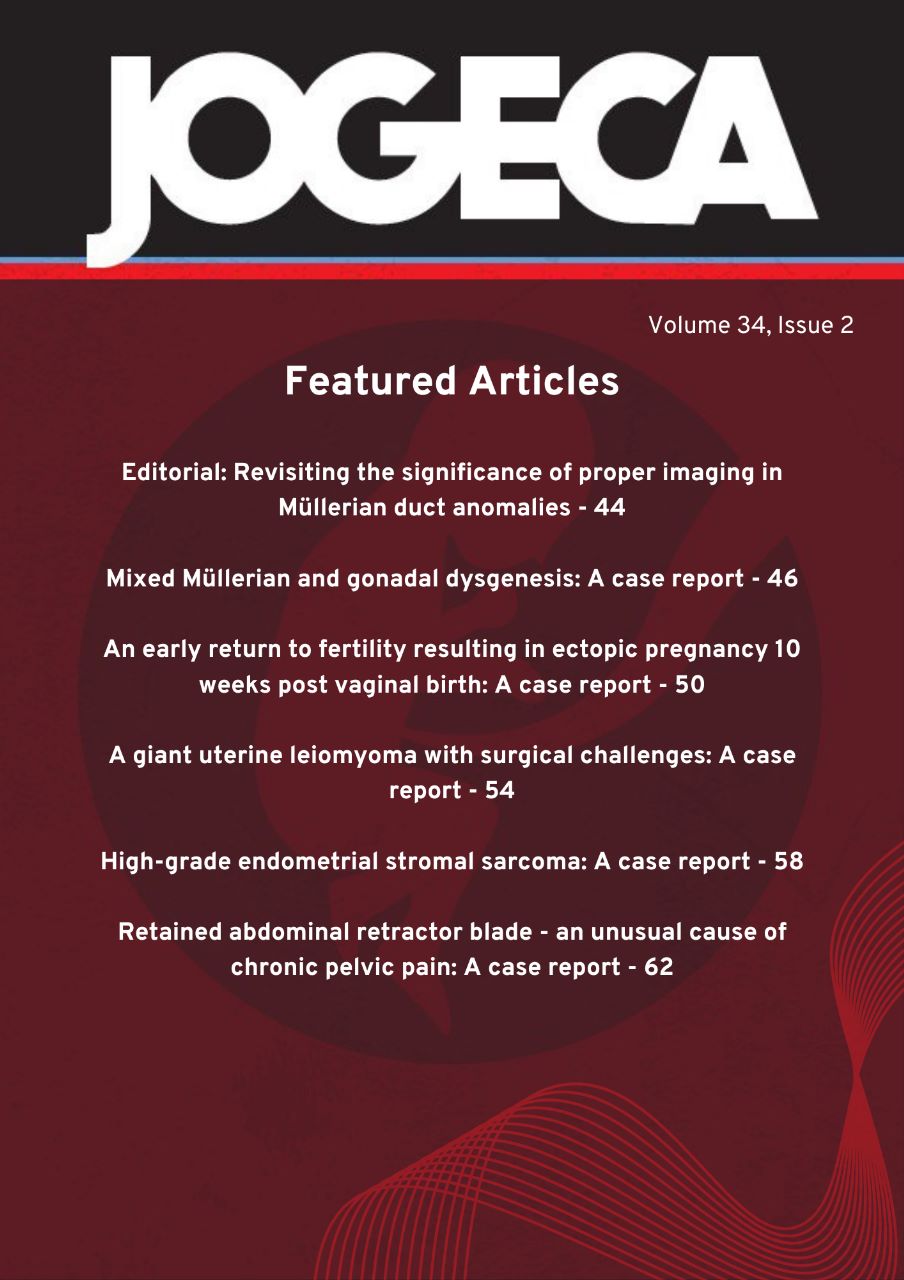Reducing unwanted adolescent pregnancies in Kenya: A policy brief with evidence-based options
DOI:
https://doi.org/10.59692/jogeca.v36i2.417Keywords:
adolescent policy, adolescent pregnancies, teenage pregnanciesAbstract
Adolescent pregnancy is a global health issue that affects millions of young girls and their families.
According to the World Health Organization, approximately 16 million adolescents aged 15-19
years give birth annually, representing 11% of all births worldwide. Most of these pregnancies occur
in low- and middle-income countries (LMIC), especially in Sub-Saharan Africa. The burden of
adolescent pregnancy in Kenya is 15% of girls aged 15-19 years, with 2.7 % of adolescents aged
15 years having ever been pregnant. Unintended pregnancies among adolescents in Kenya
account for most maternal morbidity and mortality cases from abortions. Pregnant adolescents are
at an increased risk of pregnancy and childbirth complications, unsafe abortion, violence from
intimate partners, HIV/AIDS, and other sexually transmitted infections. Furthermore, infants born to
adolescent mothers have higher probability of mortality and exposure to life-threatening conditions.
This policy brief reviews and analyses the factors associated with unintended adolescent
pregnancies in Kenya and identifies evidence-based interventions that can be applied in the local
context. It argues that a multisectoral approach involving education, contraception, and incentives
is needed to address adolescent pregnancies. In conclusion, more research is needed to tailor
these interventions to the local Kenyan context while analyzing the availability and mobilization of
resources.
Downloads
Published
How to Cite
Issue
Section
Categories
License
Copyright (c) 2024 Authors

This work is licensed under a Creative Commons Attribution 4.0 International License.




